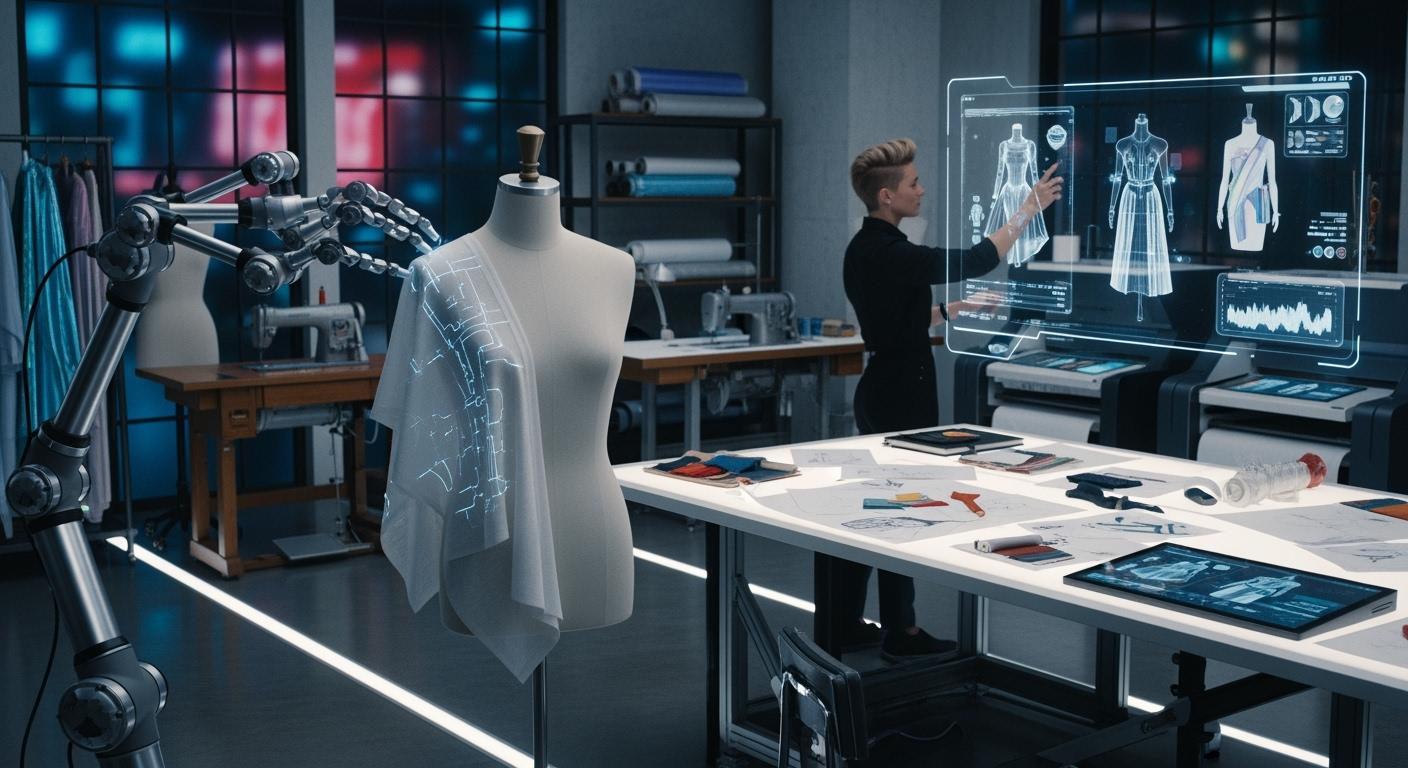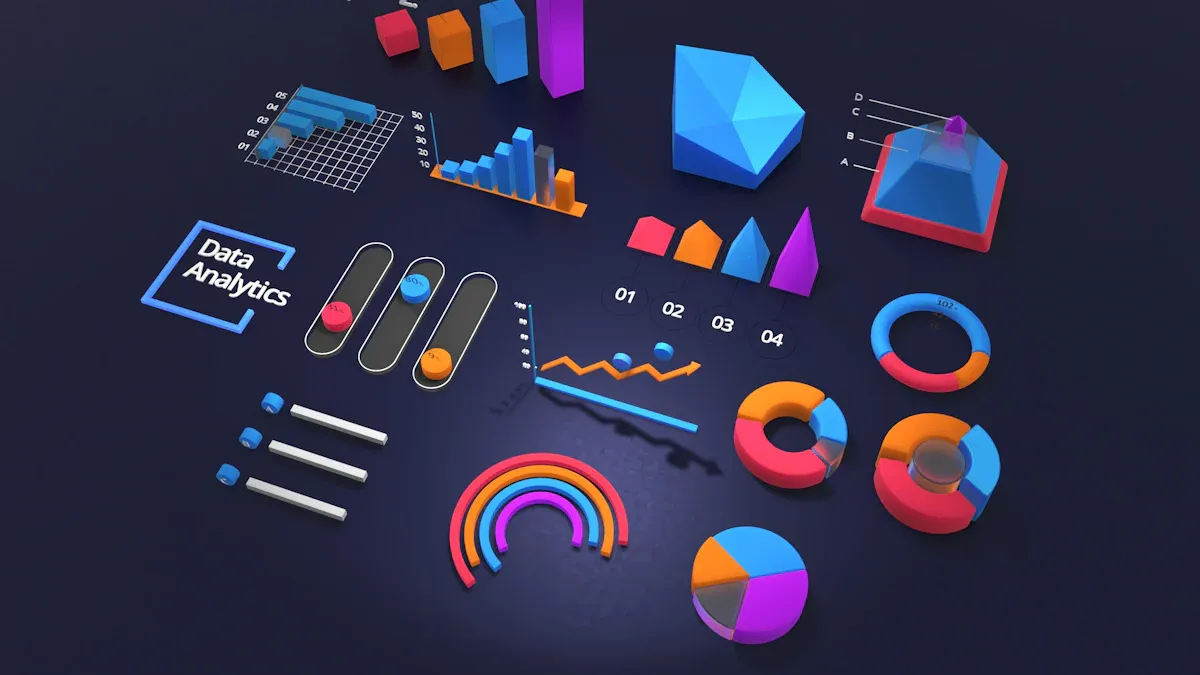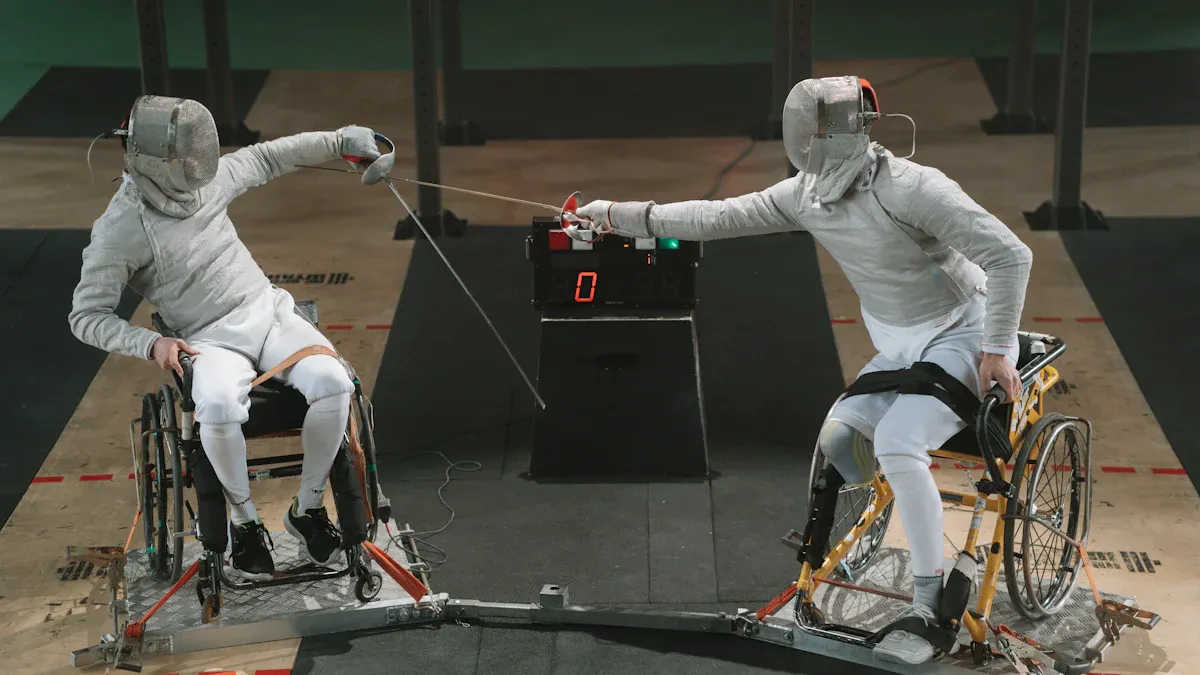
Artificial intelligence (AI) is a present-day force in adaptive fashion. New AI models are creating fashion that doesn’t exclude anyone. Finding suitable adaptive clothing is a real challenge. In 2023, 67% of families with a member having a disability reported this difficulty. Now, AI-driven adaptive clothing provides solutions. AI-driven 3D body scanning captures precise measurements for a perfect fit. This technology promotes inclusivity and greater accessibility. The U.S. adaptive clothing market shows this trend, with projections reaching $130.16 billion by 2025. This growth signals a move toward fashion that fits every body. The future of AI fashion accessibility and inclusive design is here.
AI Models and Personalized Fit

AI models are changing how we think about clothing fit. Traditional sizing often fails to meet the diverse needs of the population, especially for people with a disability. AI-driven personalization offers a solution. It creates adaptive clothing that provides a perfect fit by understanding unique body shapes and mobility needs. This technology moves fashion toward true inclusivity.
3D Body Scanning and Analysis
The foundation of a perfect fit is precise measurement. AI excels at this through 3D body scanning. This process creates a highly accurate digital version of a person's body. The technology is a game-changer for designing adaptive clothing.
The process works in a few key steps:
- Data Collection 📸: A user takes photos with a smartphone, or a 3D scanner captures their body from multiple angles. This gathers exact measurements.
- AI Algorithm Analysis: AI processes the measurements. It identifies body shape and accounts for posture, such as a seated position for wheelchair users. This creates an accurate digital body image.
- Personalization: The AI uses this data to recommend the best clothing fit. It suggests garments that match the user's specific body.
- 3D Virtual Fitting: The digital model allows users to try on clothing virtually. This is how AI predicts fit with incredible accuracy, improving size predictions before any fabric is cut.
Companies are already using this technology. TrueToForm uses a 3D body measuring app to create virtual models for designing clothing. Other platforms, like xlook, use AI-powered intelligence to offer personalized fashion guidance. This guidance considers the functional needs of people with a disability and their personal style.
AI learns from huge datasets of body scans to understand human diversity. For example, 3DLOOK’s technology captures over 85 measurement points from just two photos. Shaku’s AI analyzes body contours from front and side photos to serve all body shapes. MirrorSize goes even further, extracting over 1,000 measurement points to build a precise 3D model for brands. These diverse datasets help create unbiased algorithms for truly size-inclusive clothing.
Custom Patterns for Disability Needs
A great fit goes beyond standard measurements. It must accommodate specific mobility needs and body asymmetries. Generative AI creates custom patterns that traditional design cannot. Traditional apparel design often assumes a symmetrical body. This approach excludes individuals with a disability, such as those with scoliosis or limb differences. AI helps overcome this limitation.
AI analyzes extensive datasets of body scans. It generates new, size-inclusive patterns from the ground up. For a person with a disability, this means the AI can design clothing that accounts for their unique body features. The algorithms can make real-time adjustments to patterns. This ensures a highly personalized design process for adaptive clothing. This level of AI-driven customization is essential for meeting complex needs.
Ministry of Supply uses AI to design knitwear in a single tube. This method eliminates side seams that can irritate sensitive skin or rub against assistive devices. The AI analyzes pressure points and movement data. It then generates patterns that place seams away from high-friction areas. This creates more comfortable adaptive clothing.
AI pattern generation directly improves the fit and comfort of adaptive clothing for people with a disability.
- AI simulates how a garment will perform during daily activities. It identifies potential issues like chafing or restricted movement.
- It uses data from smart garments to analyze stress points. This helps designers adjust seams for better mobility.
- Predictive models forecast how fabrics will stretch and feel against the skin. This ensures the final clothing is engineered for pure comfort.
- Automated tools translate complex body scan data into perfectly fitted 2D patterns. This makes on-demand manufacturing of adaptive clothing possible.
Ultimately, this technology helps wearers gain independence. The right clothing fit can significantly improve the quality of life for a person with a disability. AI makes this level of personalization in adaptive clothing a reality.
Functional Design in Adaptive Clothing

A perfect fit is only half the story. Functional design makes adaptive clothing truly effective. AI is revolutionizing this area by helping create garments that are not just comfortable but also intelligent and durable. This adaptive fashion technology addresses the specific daily challenges faced by a person with a disability. AI helps designers engineer clothing that actively improves the wearer's quality of life.
AI-Powered Smart Textiles
The material of a garment is critical for comfort and function, especially for a person with a disability. AI helps designers select or even create the perfect fabrics to meet specific needs. Machine learning algorithms analyze vast material databases to identify textiles with desired properties.
- Responsive Fabrics: AI can pinpoint smart fabrics that regulate temperature or wick away moisture. Some advanced textiles even adjust to environmental conditions, providing comfort for individuals with sensory sensitivities or difficulty regulating body temperature. This is a key benefit for adaptive clothing.
- Sensory-Friendly Textures: For individuals with sensory processing disorders, the texture of clothing is paramount. AI analyzes material properties to find the softest, smoothest, and most comfortable options, avoiding irritating seams or tags.
- Enhanced Durability: Adaptive clothing often experiences high wear in specific areas. AI models predict a fabric's mechanical behaviors, like its tensile strength and bending stiffness. Artificial neural networks (ANNs) can forecast a material's strength with very low error. This allows designers to choose materials that will last, reinforcing clothing where it is needed most for a person with a disability.
Generative AI acts as a creative partner for textile designers. It can invent entirely new fabric structures. Researchers use AI to learn from existing textile data. The AI then designs novel physical weaves that automated looms can produce. This creates fabrics with superior performance, a huge step forward for adaptive clothing.
Simulating Garment-Device Interaction
For many people with a disability, clothing must work seamlessly with assistive devices like wheelchairs and prosthetics. AI simulations, or "digital twins," provide a way to test these interactions virtually before a single piece of clothing is made. This process saves time and resources while ensuring a better final product.
Engineers create a virtual copy of a fabric or a complete garment. They then feed data into a computer simulation to test its performance. This allows designers to see how a pair of pants might bunch up for a wheelchair user or how a sleeve might interfere with a prosthetic arm. Machine learning algorithms can even suggest automatic improvements to the design. This helps engineers refine digital models and accelerate the development of effective adaptive clothing.
This simulation has life-changing applications for people with a disability.
- Pressure Sore Prevention: Researchers are developing systems for wheelchair users that use fabric embedded with sensors. AI processes pressure and moisture data in real-time to identify problem areas. The system can then automatically adjust the wheelchair seat to relieve pressure, preventing dangerous pressure sores for a person with a disability.
- Postural Risk Assessment: Other projects use smart textiles in cushions and shorts to measure pressure. A mobile app with an AI engine evaluates this data to identify postural risks for a person with a disability. It can suggest actions like changing wheelchair posture to prevent ulcers.
These AI simulations ensure that adaptive clothing is not just an afterthought but a carefully engineered solution. This technology helps create clothing that supports the health, independence, and dignity of every person with a disability. The AI-driven approach to adaptive design considers the complex needs of a person with a disability from the very beginning. This makes the resulting clothing more functional and reliable for a person with a disability.
Improving AI Fashion Accessibility
Beyond fit and function, true accessibility means improving the entire shopping and production experience. AI is making the process of finding and buying adaptive clothing easier and more dignified. This focus on ai fashion accessibility ensures that personalized solutions are available to everyone. The technology is creating a more inclusive market for ai-driven adaptive clothing. This improvement in ai fashion accessibility is a major step forward.
AI Stylists and Virtual Try-Ons
Shopping for clothing can be a frustrating process for a person with a disability. AI-powered personalization offers personalized styling to solve this problem. AI stylists act as digital assistants that understand the unique needs of each user. This technology is key to improving ai fashion accessibility. These systems provide personalized style solutions that consider much more than just size.
- AI learns a user's posture and movement limits to suggest clothing for seated or standing fits.
- It understands comfort triggers for users with sensory sensitivities.
- The technology suggests adaptive designs like side zips or magnetic closures to make dressing easier.
- AI also considers how clothing will work with assistive devices, a critical part of ai fashion accessibility.
Virtual try-on technology enhances this personalized styling experience. It uses digital avatars that accurately represent a person's body, including in a seated posture. AI ensures that virtual garments drape naturally on the avatar. This gives users a clear picture of how the clothing will look and fit, boosting confidence and improving ai fashion accessibility. This ai-driven customization makes shopping for adaptive clothing more efficient.
A Note on Data Privacy This level of personalization requires sensitive data, like body scans. Companies must prioritize user privacy. Strong security measures, like encrypted image storage and clear consent policies, are essential. Protecting this data is fundamental for building trust and ensuring the responsible growth of ai fashion accessibility.
On-Demand AI-Driven Adaptive Clothing
AI is also changing how adaptive clothing is made. On-demand manufacturing, powered by AI, makes niche adaptive designs more economically viable. This model shifts production from "produce, then sell" to "sell first, then produce." This approach directly links production to customer orders for ai-driven adaptive clothing.
This method offers huge benefits for sustainability and accessibility. AI analyzes data to create optimized patterns, and technologies like 3D printing produce custom-fit clothing with minimal waste. This process makes true accessibility integration possible. On-demand production reduces unnecessary inventory by over 40%. It also cuts fabric waste, making ai-driven adaptive clothing a more sustainable choice. This is a core part of improving ai fashion accessibility.
For brands, this means lower costs. They no longer need to invest in large production runs for specialized clothing. For a person with a disability, it means greater access to a wide range of ai-driven adaptive clothing designed for their specific needs. This adaptive fashion technology makes personalized fashion solutions a reality for a person with a disability. The result is better clothing and more choices for every person with a disability. This is how ai-driven adaptive clothing promotes accessibility.
AI models are transforming adaptive fashion. AI achieves a perfect fit through data and improves adaptive clothing with intelligent design. The technology also enhances accessibility through personalization. By 2025, AI will cement adaptive fashion's role as a leader in inclusive design. This adaptive approach reduces waste, proving that AI can make stylish clothing and a better fit truly accessible for everyone. This commitment to inclusivity and adaptive clothing shows the power of AI.
FAQ
How does AI improve clothing fit?
AI analyzes 3D body scans to create a precise digital model of a person. It considers unique body shapes and posture. This data helps designers create custom patterns. The result is a perfect fit, especially for people with disabilities.
What are AI-powered smart textiles?
Smart textiles are advanced fabrics with special properties. AI helps find materials that can:
- Regulate body temperature 🌡️
- Feel extra soft for sensory needs
- Offer enhanced durability
These fabrics improve comfort and function in adaptive clothing.
Is my body scan data safe with AI fashion apps?
Reputable companies prioritize user privacy. They use strong security measures like data encryption to protect personal information. Users should always review a company's privacy policy to understand how it handles their data.
How does AI make adaptive clothing more affordable?
AI enables on-demand manufacturing. Brands produce clothing only after a customer places an order. This model reduces waste and inventory costs. The savings can make specialized adaptive clothing more accessible and affordable for everyone.
See Also
Sustainable Fashion: AI Solutions for a Greener, Better Planet
Fashion Retail's Future: Predictive AI Models by 2025
AI Sensors Revolutionize Fashion Supply Chains by 2025
Streamlining Fashion Returns: Smarter AI Solutions for Immediate Impact